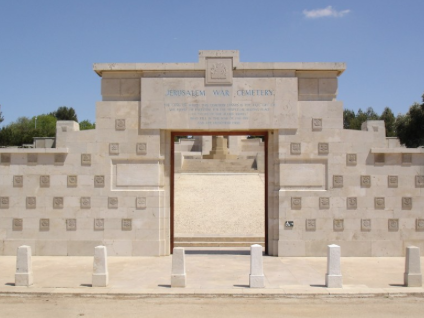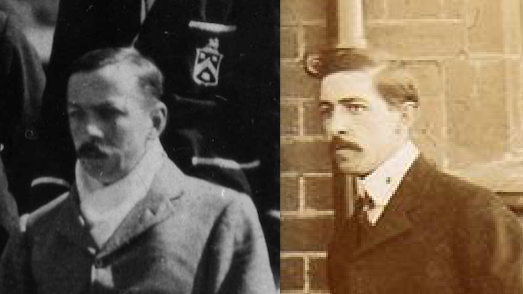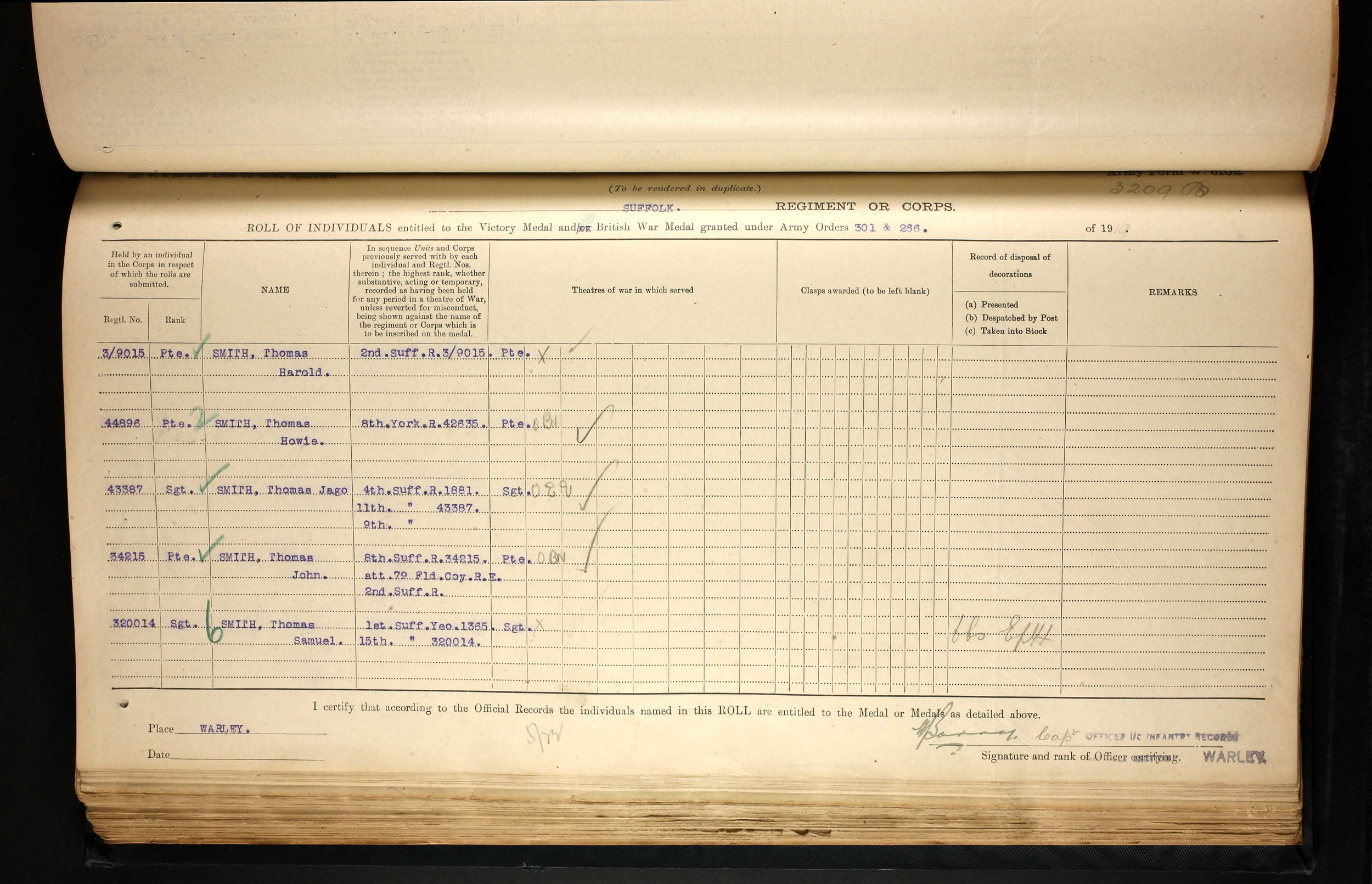Thomas Samuel Smith
Rank: Serjeant
Service Number: 320014
Date of Birth: 1883
Regiment: 15th (Suffolk Yeomanry) Bn, Suffolk Regiment
Date of Death: 8 December 1917
Age at death: 34
Cemetery: Jerusalem War Cemetery
Country: Palestine (Now Israel)
Grave / Reference: Y.31
Relatives: Son of James and Sarah Ann Smith
Address: 131 George Street, Hadleigh
Sam was born in 1883 and lived his early live in Benton Street. In 1891 he was 7 years old and living at home in Benton Street with his parents; James and Sarah Ann and siblings; George (21), Phoebe (16) and Ada (13). He started school at the age of 6 at the Church of England (National) School in Bridge Street and this began a deep connection with the school that continued until he was mobilised with the Suffolk Yeomanry at the start of the war. His school career passed from pupil through the grades of monitor, pupil teacher, uncertificated teacher and certificated teacher; he was for twelve and a half years a certificated assistant master. He was also a lieutenant in the Hadleigh company of the Church Lads Brigade and a member of the committees of the Hadleigh Cricket and Football Clubs and secretary to the Bathing Committee.
Excerpt from 1891 Census
The Gallipoli peninsula was eventually evacuated in December in a carefully managed operation hidden from the enemy and the last group of Suffolk Yeomanry comprising of 24 officers and men, which included Sam, left on the 19th. The Regiment now followed the the 5th Suffolks to Egypt where they spent 1916 before moving north to Gaza and on to Jerusalem in 1917. In a letter written from Egypt in July 1916, Sam Smith tells that he is in the “land of sunshine and sand” and that he is pleased that he has reached the rank as full sergeant, “for it shows that is doing a little good.” He finishes his letter saying “I am enjoying the sights and experiences which I hope to be able to tell the [school] boys about before long.” It is said that “for the best of motives he [Sam] declined the honour of a commissioned rank.” In January 1917 Sam was in hospital in Alexandria suffering the effects of dysentery. This was the time when the Suffolk Yeomanry officially became the 15th (Yeomanry) Battalion of the Suffolk Regiment, part of the 74th Division of the British army; the 5th Suffolk were part of the 54th Division.
Lance Corporal Alfred Lambert.
Sam Smith had enlisted into the Suffolk Yeomanry, also known as the Loyal Suffolk Hussars in May 1910 and in June the following year was one a few troopers selected to represent his regiment at the coronation of King George V. The Suffolk Yeomanry were mobilised the day after war was declared and spent the next year training as mounted infantry and “guarding” the Suffolk coast. As the war unfolded it became clear by September 1915 that the need for cavalry was limited and the men of the Suffolk Yeomanry were separated from their horses and sent overseas as a dismounted infantry regiment. Sam Smith arrived with the regiment at Anzac Cove, Gallipoli on 8 October 1915 and endured the horrendous conditions of that campaign which by then was already a disastrous failure.
Jerusalem War Cemetery
1n 1917 under General Allenby's command, the division moved out of Egypt to confront the Turkish forces in Palestine. Following the three battles of Gaza, steady progress was made towards the prize of Jerusalem. Sam's battalion held the line around Wadi Saba where it repulsed many Turkish attacks before it went onto the offensive in early November, capturing the towns of Beit Nebala and El Jib; thus forcing the surrender of Jerusalem.
“A Christmas present for the British people” was Prime Minister, David Lloyd George’s proclamation that the Holy City of Jerusalem had been captured by the allies on 9 December 1917. In Hadleigh it was reported that there were “feelings of great pleasure that Holy City was again in the hands of Christians after a lapse of centuries and the flag of St George floated over the Deanery Tower in celebration with a special service held in the parish church.” The Battle for Jerusalem had taken two days and although many Hadleigh men were involved, only Sergeant Thomas Samuel ‘Sam’ Smith, was to lose his life. Sergeant Thomas Samuel Smith is buried 2km to the north of the old city in the Jerusalem War Cemetery and is remembered on the Hadleigh War memorial.
Is this Thomas Samuel Smith?
We have not found any photographs that positively identify Thomas Samuel Smith. However, we know Thomas was a member of the Hadleigh Cricket Club and he was the Assistant Head Master at Bridge Street School. The two images on the left were taken from a photograph of the 1912 Hadleigh Cricket Club and a School Group photograph.


















